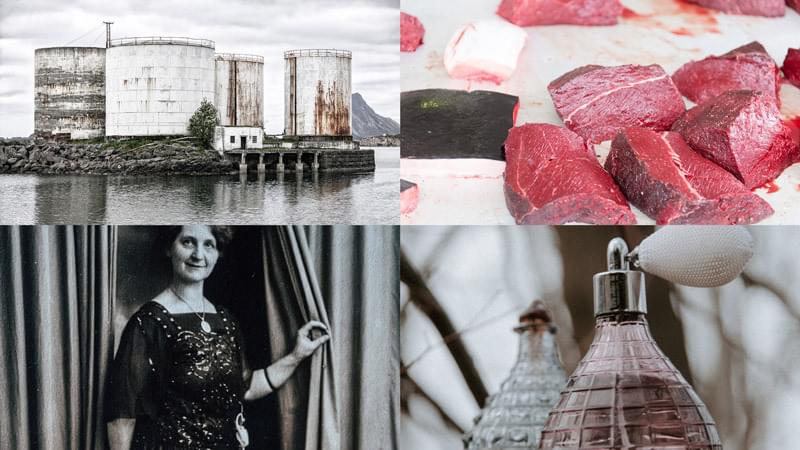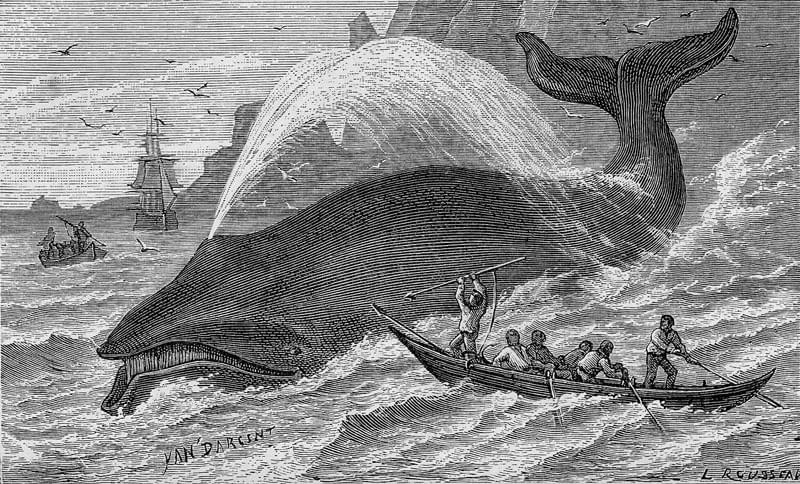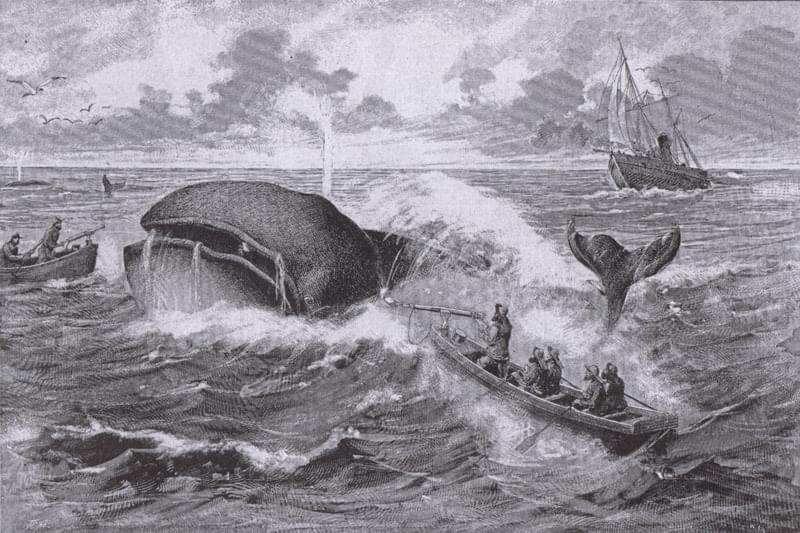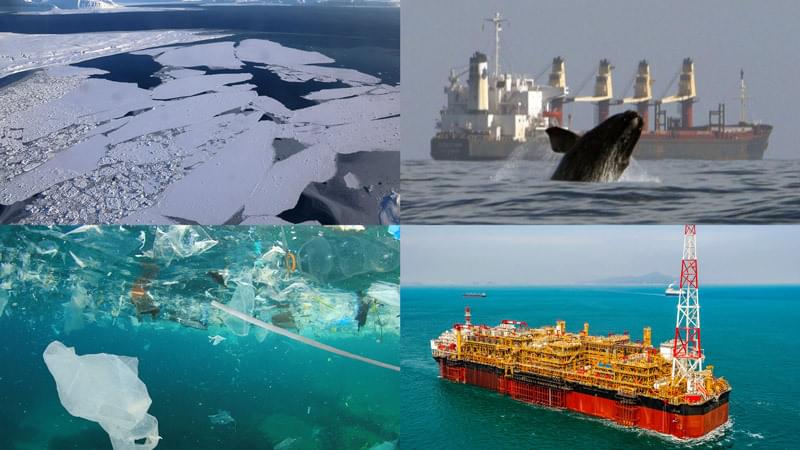How has human activity affected whales?
Part of:
Convex Seascape SurveyWhales have been hunted for their meat for thousands of years, but about 200 years ago nations such as the UK, Norway, and the United States, started to hunt whales in much greater numbers. This came about because of the Industrial Revolution, a period of time during the 18th and 19th centuries when societies started to use machines to manufacture goods.
These machines needed oil to keep them lubricated and in good working order, and as populations grew, people also needed oil to produce candles and for oil lamps which lit homes and streets. This oil came from the blubber (the body fat) of whales, as well as the enormous head cavity of sperm whales.

Other body parts were used as well. The baleen of whales (which are the bristles found in the mouths of some species) was used in clothing and fashion items, such as the brims of hats, the parts of the umbrella that hold it open, and corsets and hoop skirts worn during the 18th and 19th centuries.
The oil and other parts of whales were also used in expensive perfumes and cosmetics, and even to make soap and margarine.

In the early days of industrial whaling, the whalers could only target a few species. The bowhead whale (which used to be called the Greenland whale (pictured above) and right whale were considered the ideal species to target. This is because they swim slowly and have lots of blubber, so they float when killed and provide a lot of oil. As these populations were reduced in numbers by hunting, the whaling ships started to go on much longer journeys searching for other species of whales.

These longer journeys and targeting faster whales required better technology to catch them. So whaling boats became bigger and faster, and the harpoons as you can see in this picture became more technologically advanced. This allowed whalers to catch species like blue and fin whales that were too fast for the old technologies. This picture shows that whaling was a very dangerous business for humans, but ultimately it was the whales that suffered the most.
This graph shows the numbers of whales of different species
before and after industrial whaling. These are all estimates because we will
never know for certain just how many whales existed, but you can see that
scientists have estimated some large declines in whale populations.
For example, blue whales used to have a population of over 340,000 individuals, which declined to fewer than 5000 individuals due to hunting. That is a 98% decrease in the number of blue whales swimming in our seas.
Right whales and bowhead whales declined by nearly 90% because of whaling, and many other species declined as well.
This graph shows how many whales we were catching around the
world each year during the late 19th and 20th century.
The top red line is the total number of whales caught of all species. As the
graph shows, the numbers of whales killed peaked in the 1960s, at which point
just over 80,000 whales were being caught each year.
However, if you look at all the lines below, each of these represents a single whale species. Looking at these individual graphs during the peak if whaling in the 1960s, these catches were made up mostly of sperm, fin and sei whales.
At the beginning of the 20th century catches were mostly made up of humpbacks. The right whales and bowhead whales do not feature in this graph because their populations had already decreased from hunting.
When you add the numbers together, scientists estimate that nearly 3 million whales were killed from whaling during the 20th century alone.

Eventually, petroleum and other fossil fuels replaced the use of whale oil in lighting, fuel and machinery, but not before millions of whales had been hunted and killed. Fortunately, by the early 1980s most countries around the world agreed to stop hunting whales.
While hunting is no longer a major threat, there are still threats to whales. This includes global climate change and warming oceans, which will impact food availability, plastic pollution, accidental strikes by vessels (as ships travel much faster and there is a lot of shipping on the ocean), and underwater noise which can damage hearing or disrupt communication among family groups of whales.